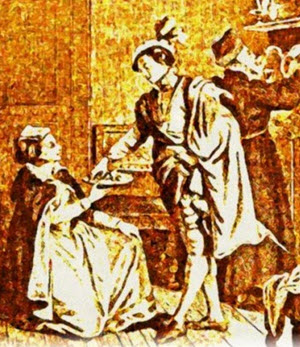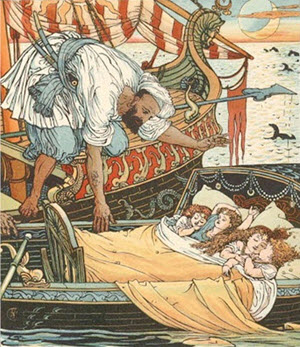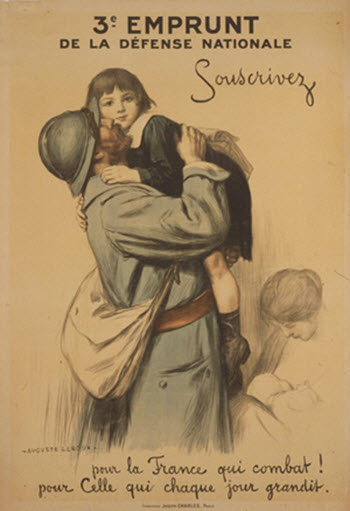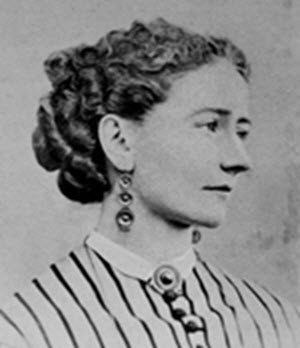Legands of the Jews > Volume 4 >
THE THRONE OF SOLOMON
Next to the Temple in its magnificence, it is the throne of Solomon that perpetuates the name and fame of the wise king. None before him and none after him could produce a like work of art, and when the kings, his vassals, saw the magnificence of the throne they fell down and praised God. The throne was covered with fine gold from Ophir, studded with beryls, inlaid with marble, and jewelled with emeralds, and rubies, and pearls, and all manner of gems. On each of its six steps there were two golden lions and two golden eagles, a lion and an eagle to the left, and a lion and an eagle to the right, the pairs standing face to face, so that the right paw of the lion was opposite to the left wing of the eagle, and his left paw opposite to the right wing of the eagle. The royal seat was at the top, which was round.
On the first step leading to the seat crouched an ox, and opposite to him a lion; on the second, a wolf and a lamb; on the third, a leopard and a goat; (67) on the fourth perched an eagle and a peacock; on the fifth a falcon (68) and a cock; and on the sixth a hawk and a sparrow; all made of gold. At the very top rested a dove, her claws set upon a hawk, to betoken that the time would come when all peoples and nations shall be delivered into the hands of Israel. Over the seat hung a golden candlestick, with golden lamps, pomegranates, snuff dishes, censers, chains, and lilies. Seven branches extended from each side. On the arms to the right were the images of the seven patriarchs of the world, Adam, Noah, Shem, Job, Abraham, Isaac, and Jacob; and on the arms to the left, the images of the seven pious men of the world, Kohath, Amram, Moses, Aaron, Eldad, Medad, and the prophet Hur. Attached to the top of the candlestick was a golden bowl filled with the purest olive oil, to be used for the candlestick in the Temple, and below, a golden basin, also filled with the purest olive oil, for the candlestick over the throne. The basin bore the image of the high priest Eli; those of his sons Hophni and Phinehas were on the two faucets protruding from the basin, and those of Nadab and Abihu on the tubes connection the faucets with the basin.
On the upper part of the throne stood seventy golden chairs for the members of the Sanhedrin, and two more for the high priest and his vicar. When the high priest came to do homage to the king, the members of the Sanhedrin also appeared, to judge the people, and they took their seats to the right and to the left of the king. At the approach of the witnesses, the machinery of the throne rumbled the wheels turned, the ox lowed, the lion roared, the wolf howled, the lamb bleated, the leopard growled, the goat cried, the falcon screamed, the peacock gobbled, the cock crowed, the hawk screeched, the sparrow chirped all to terrify the witnesses and keep them from giving false testimony.
When Solomon set foot upon the first step to ascend to his seat, its machinery was put into motion. The golden ox arose and led him to the second step, and there passed him over to the care of the beasts guarding it, and so he was conducted from step to step up to the sixth, where the eagles received him and placed him upon his seat. As soon as he was seated, a great eagle set the royal crown upon his head. Thereupon a huge snake rolled itself up against the machinery, forcing the lions and eagles upward until they encircled the head of the king. A golden dove flew down from a pillar, took the sacred scroll out of a casket, and gave it to the king, so that he might obey the injunction of the Scriptures, to have the law with him and read therein all the days of his life. Above the throne twenty-four vines interlaced, forming a shady arbor over the head of the king, and sweet aromatic perfumes exhaled from two golden lions, while Solomon made the ascent to his seat upon the throne. (69)
It was the task of seven heralds to keep Solomon reminded of his duties as king and judge. The first one of the heralds approached him when he set foot on the first step of the throne, and began to recite the law for kings, "He shall not multiply wives to himself." At the second step, the second herald reminded him, "He shall not multiply horses to himself"; at the third, the next one of the heralds said, "Neither shall he greatly multiply to himself silver and gold." At the fourth step, he was told by the fourth herald, "Thou shalt not wrest judgment"; at the fifth step, by the fifth herald, "Thou shalt not respect persons," and at the sixth, by the sixth herald, "Neither shalt thou take a gift." Finally, when he was about to seat himself upon the throne, the seventh herald cried out: "Know before whom thou standest." (70)
The throne did not remain long in the possession of the Israelites. During the life of Rehoboam, the son of Solomon, it was carried to Egypt. Shishak, the father-in-law of Solomon, appropriated it as indemnity for claims which he urged against the Jewish state in behalf of his widowed daughter. When Sennacherib conquered Egypt, he carried the throne away with him, but, on his homeward march, during the overthrow of his army before the gates of Jerusalem, he had to part with it to Hezekiah. Now it remained in Palestine until the time of Jehoash, when it was once more carried to Egypt by Pharaoh Necho. His possession of the throne brought him little joy. Unacquainted with its wonderful mechanism, he was injured in the side by one of the lions the first time he attempted to mount it, and forever after he limped, wherefore he was given the surname Necho, the hobbler. (71) Nebuchadnezzar was the next possessor of the throne. It fell to his lot at the conquest of Egypt, but when he attempted to use it in Babylonia, he fared no better than his predecessor in Egypt. The lion standing near the throne gave him so severe a blow that he never again dared ascend it. Through Darius the throne reached Elam, but, knowing what its other owners had suffered, he did not venture to seat himself on it, and his example was imitated by Ahasuerus. The latter tried to have his artificers fashion him a like artistic work, but, of course, they failed. (72) The Median rulers parted with the throne to the Greek monarchs, and finally it was carried to Rome. (73)





